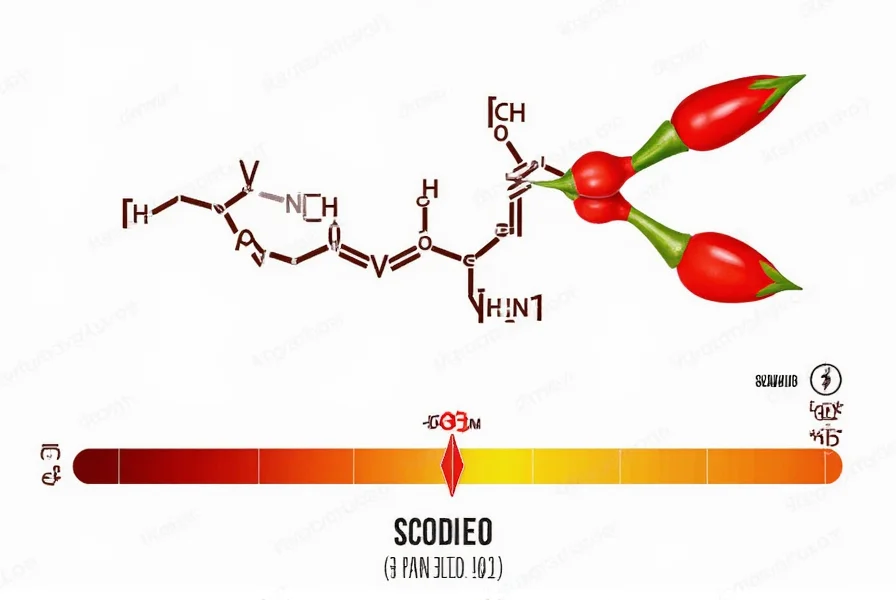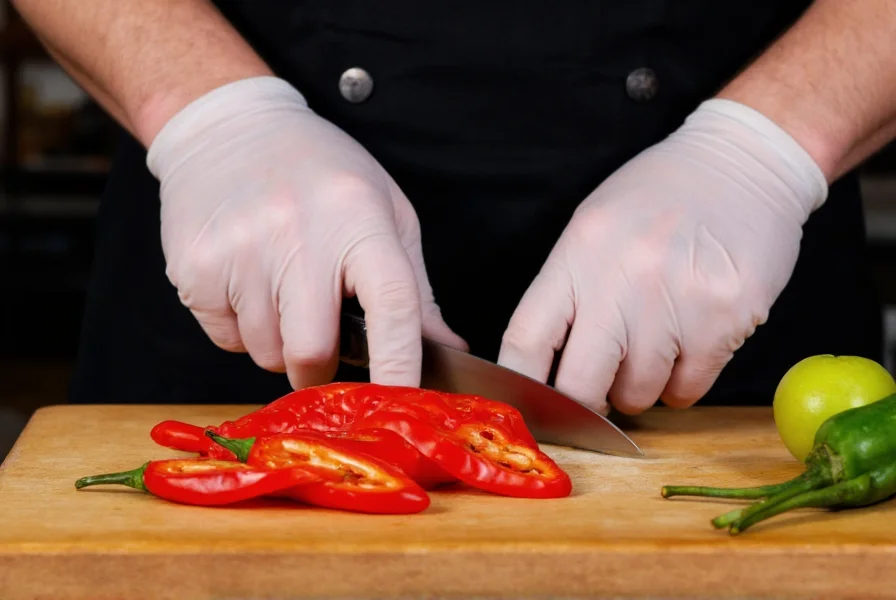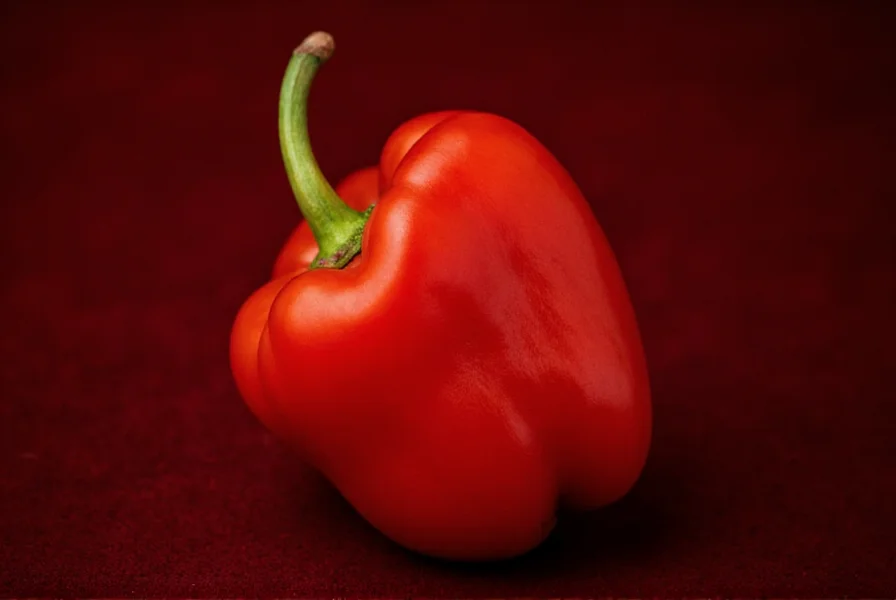The Scoville scale remains the definitive measurement for chili pepper heat, but understanding where ghost peppers rank requires context about both the scale itself and the pepper's unique properties. Ghost peppers, scientifically known as Capsicum chinense 'Bhut Jolokia,' earned notoriety when they held the Guinness World Record for hottest chili pepper from 2007 to 2011.
Understanding the Scoville Heat Unit System
Developed by pharmacist Wilbur Scoville in 1912, the Scoville Organoleptic Test originally measured heat through human taste panels diluting pepper extracts until the burn became undetectable. Today, high-performance liquid chromatography (HPLC) provides precise measurements of capsaicinoids—the compounds responsible for heat—which are then converted to Scoville Heat Units.
Modern testing reveals significant variation in ghost pepper heat levels due to growing conditions, soil composition, and climate factors. While the official range spans 855,000-1,041,427 SHU, individual peppers may fall outside this spectrum.
Ghost Pepper Heat Range Explained
Ghost peppers consistently register in the upper echelons of the Scoville scale. To contextualize this measurement:
| Pepper Variety | Scoville Heat Units (SHU) | Ghost Pepper Comparison |
|---|---|---|
| Bell Pepper | 0 SHU | Over 855,000 units milder |
| Jalapeño | 2,500-8,000 SHU | 107-342 times milder |
| Habanero | 100,000-350,000 SHU | 2.5-10 times milder |
| Ghost Pepper | 855,000-1,041,427 SHU | Baseline |
| Carolina Reaper | 1,400,000-2,200,000 SHU | 1.3-2.6 times hotter |
Practical Implications of Ghost Pepper Heat
Consuming ghost peppers requires serious consideration due to their extreme heat level. The capsaicin concentration affects more than just taste buds—it triggers physiological responses including sweating, increased heart rate, and temporary gastrointestinal distress. Food handlers should always wear gloves when preparing ghost peppers, as capsaicin can transfer to sensitive areas like eyes.
Chefs who work with ghost peppers typically use minute quantities—often just a few flakes—to achieve desired heat levels in dishes. The heat builds gradually, with full intensity reaching its peak after 30-45 seconds. This delayed reaction often catches inexperienced consumers off guard.

Common Misconceptions About Ghost Peppers
Several myths persist about ghost peppers and the Scoville scale. Many believe the seeds contain most of the heat, but capsaicin primarily concentrates in the white pith (placenta) surrounding the seeds. Another misconception suggests milk completely neutralizes capsaicin burn—it merely provides temporary relief by dissolving the oil-based compound.
While ghost peppers previously held the world's hottest title, they've been surpassed by newer cultivars like the Carolina Reaper and Pepper X. However, ghost peppers remain significantly hotter than most commercially available peppers and continue to challenge even experienced heat seekers.
Safety Considerations for Handling Ghost Peppers
Proper handling techniques prevent unnecessary discomfort:
- Always wear nitrile gloves (latex provides insufficient protection)
- Work in well-ventilated areas to avoid inhaling capsaicin particles
- Avoid touching face or sensitive areas during preparation
- Use separate cutting boards and utensils dedicated to hot peppers
- Wash all surfaces with soapy water after handling
For accidental skin exposure, apply oil-based substances like vegetable oil before washing with soap. For eye exposure, flush with saline solution and seek medical attention if irritation persists.

Measuring Heat Beyond the Scoville Scale
While the Scoville scale remains popular for consumer understanding, researchers increasingly rely on ASTA pungency units, which provide more precise capsaicinoid measurements. One Scoville unit equals approximately 15-16 ASTA pungency units. This scientific approach eliminates human subjectivity from heat measurement.
Genetic research continues to develop new pepper varieties with controlled heat levels, potentially creating ghost pepper derivatives with more consistent Scoville ratings. Understanding these measurements helps consumers make informed decisions about heat tolerance and culinary applications.
How many times hotter than a jalapeño is a ghost pepper?
Ghost peppers measure between 855,000-1,041,427 Scoville Heat Units, making them approximately 107-342 times hotter than jalapeños, which range from 2,500-8,000 SHU. This means even a small amount of ghost pepper can deliver intense heat compared to common peppers.
What does 1 million Scoville units feel like?
Experiencing 1 million Scoville units (typical for ghost peppers) creates an intense burning sensation that builds gradually over 30-45 seconds. Physical reactions often include sweating, increased heart rate, facial flushing, and temporary gastrointestinal discomfort. The burn can last 20-45 minutes and affects more than just the mouth—it can trigger neurological responses throughout the body.
Can ghost peppers cause permanent damage?
While ghost peppers cause significant temporary discomfort, they don't typically cause permanent damage when consumed in reasonable quantities. However, excessive consumption may lead to temporary gastrointestinal issues like nausea or stomach pain. Direct skin contact without protection can cause chemical burns that last several days. People with certain medical conditions should consult doctors before consuming extremely hot peppers.
Why do Scoville ratings for ghost peppers vary so much?
Ghost pepper heat levels vary due to multiple factors including growing conditions, soil composition, climate, water availability, and even the specific plant within a crop. These environmental variables affect capsaicin production, causing individual peppers from the same plant to register different Scoville measurements. This natural variation explains why ghost peppers have a range (855,000-1,041,427 SHU) rather than a single value.
How do you neutralize ghost pepper burn?
To neutralize ghost pepper burn, consume dairy products like milk or yogurt, which contain casein that binds to capsaicin. Sugar or honey can also help by counteracting the heat sensation. Avoid water, which spreads capsaicin rather than dissolving it. For skin exposure, apply vegetable oil before washing with soap. The burn typically subsides within 20-45 minutes as capsaicin metabolizes in the body.











 浙公网安备
33010002000092号
浙公网安备
33010002000092号 浙B2-20120091-4
浙B2-20120091-4